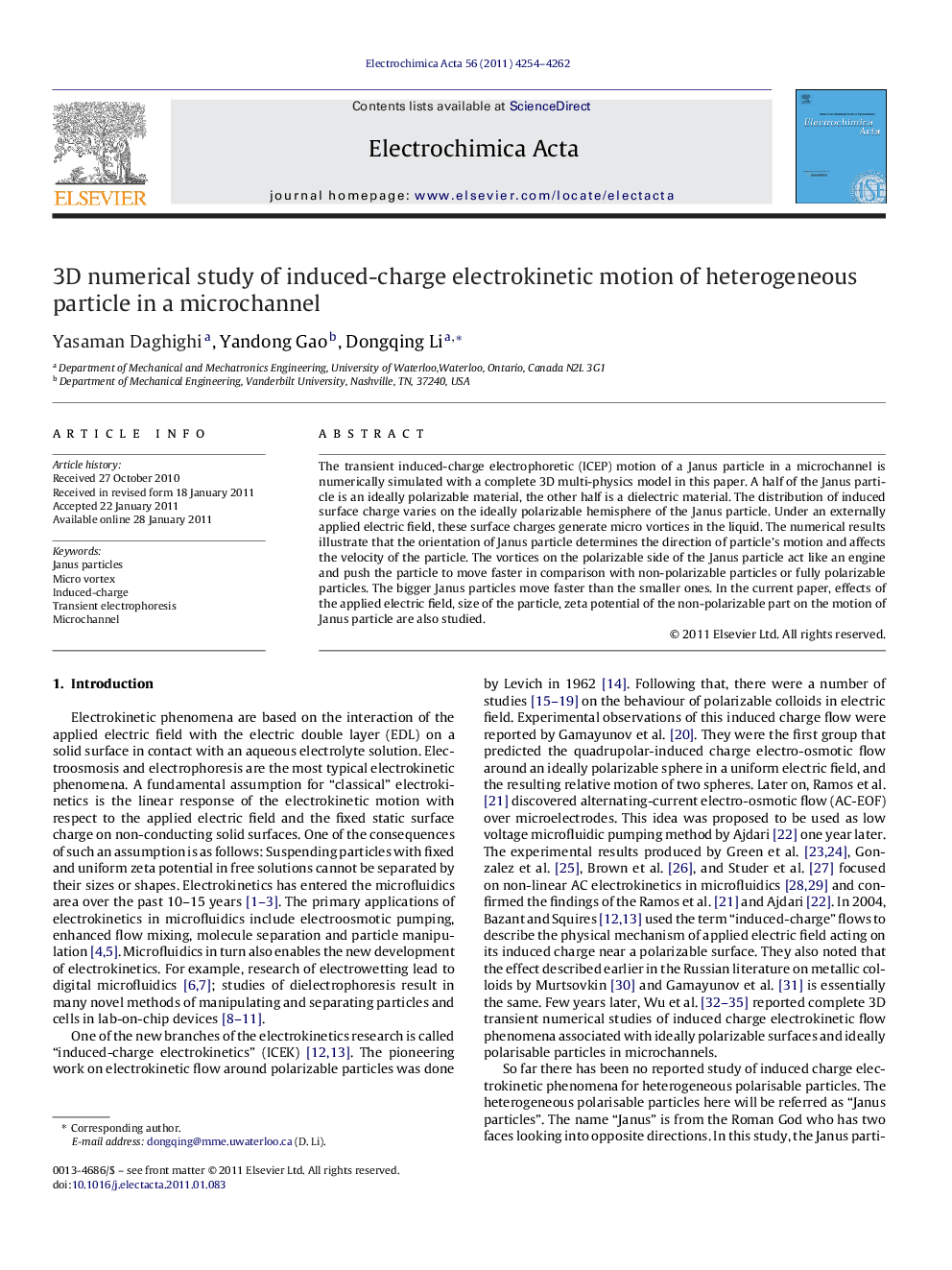| Article ID | Journal | Published Year | Pages | File Type |
|---|---|---|---|---|
| 190293 | Electrochimica Acta | 2011 | 9 Pages |
The transient induced-charge electrophoretic (ICEP) motion of a Janus particle in a microchannel is numerically simulated with a complete 3D multi-physics model in this paper. A half of the Janus particle is an ideally polarizable material, the other half is a dielectric material. The distribution of induced surface charge varies on the ideally polarizable hemisphere of the Janus particle. Under an externally applied electric field, these surface charges generate micro vortices in the liquid. The numerical results illustrate that the orientation of Janus particle determines the direction of particle's motion and affects the velocity of the particle. The vortices on the polarizable side of the Janus particle act like an engine and push the particle to move faster in comparison with non-polarizable particles or fully polarizable particles. The bigger Janus particles move faster than the smaller ones. In the current paper, effects of the applied electric field, size of the particle, zeta potential of the non-polarizable part on the motion of Janus particle are also studied.
Research highlights► The first 3D model of the transient induced-charge electrophoretic motion of a Janus particle. ► Studies of the vortices around the polarizable hemisphere of the Janus particle. ► These vortices act like propelling engines and control the particle's speed and direction. ► Effects of applied electric field, particle size, zeta potential on the motion of Janus particle.
